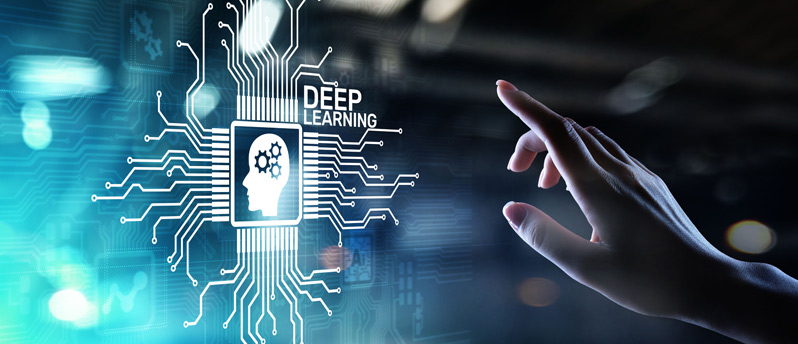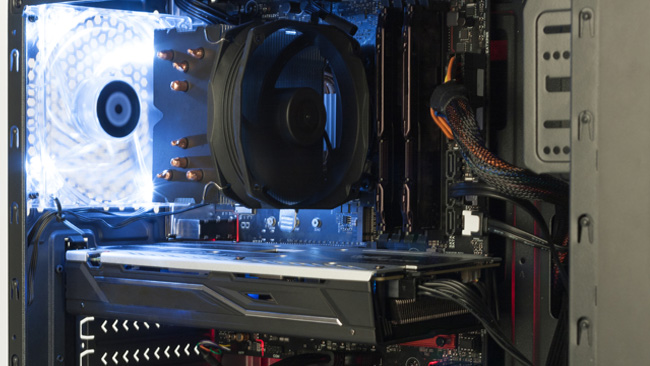Deep learning is the foundation for many complex computing tasks such as big data analysis, natural language processing (NLP), and computer vision. This technology is continually being improved with each passing year. It’s even more vital in an era where artificial intelligence (AI) is slowly being used to perform tasks that in the past were unimaginable or impossible to automate. This includes invocations such as face recognition and autonomous cars.
These tasks, however, need intense computational requirements, meaning your choice of a graphics processing unit (GPU) will significantly define how deep your experience will be. This is possible as GPUs boast extraordinary power. Without further ado, here’s why scientists at Cnvrg and similar platforms see GPUs as influencing deep learning. However, it might help to first discuss what GPUs are.

What Are Graphics Processing Units?
A GPU is a processor that’s a mini version of the whole computer and is designed to do an exceptional job of performing specialized computations. This differentiates it from a central processing unit (CPU), which performs different tasks simultaneously. With the GPU solely focusing on mathematical and graphical computations, the CPU becomes free to focus on other essential tasks. GPUs are effective at processing, for example, complex geometry, vectors, textures, shapes, and illuminations.
Integrated into the GPU’s motherboard is a processor alongside a proper thermal design for cooling and ventilation, as well as a video random access memory (video RAM or VRAM). With this basic understanding, it will next be discussed why GPUs’ use has intensified in deep learning.
Why Are GPUs Better For Deep Learning?
There are a few reasons why GPUs have been deemed ideal for deep learning. These include the following:
1. Parallel Computing
One of the main reasons GPUs are believed to be preferred to CPUs is that they do computing processes in parallel. Parallel computing architecture allows for different processors to perform several smaller computations broken down from a complex and bigger problem.
GPUs have a huge number of cores that enable an improved computation of parallel processes. They also have numerous cores integrated into the processing unit that allow splitting tasks into several smaller tasks that are then run simultaneously. This allows the use of available processing power, thereby completing the tasks a lot quicker.
CPUs typically do their tasks in a serial fashion, and they can have two, four, eight, or 16 cores. Each of these cores is mandated to complete a specific task at a time. For example, a CPU with two cores can run two separate tasks on each of these two cores, thereby achieving multitasking. However, these processes are executed in a serial manner. In contrast, GPUs have thousands of cores, making them best suited to finish such tasks simultaneously.
2. Dataset Size
A substantial amount of dataset is required when training a model in deep learning, which translates to huge computational operations when it comes to memory. For optimal data computation, it’s perhaps best to have a GPU. For you to enjoy greater benefit over the CPU, opting for greater computation is recommended.
3. Memory Bandwidth
GPUs are believed to have an edge over CPUs in terms of speed largely due to their memory bandwidth. CPUs, because of the large quantity of datasets, usually end up using lots of memory when training a model. And when computing complex and huge tasks, they end up using lots of clock cycles. This happens because CPUs do the job sequentially and don’t have as many cores as GPUs.
In contrast, GPUs feature a dedicated VRAM. Thanks to this, a CPU’s memory is freed up for use in performing other tasks. That said, transferring huge quantities of memory from the CPU to the GPU is usually a huge challenge. This is the case despite a GPU being a lot quicker, and this might result in greater overhead, depending on the processor’s architecture.
The memory bandwidth of the simplest GPU is usually 750GB/s, while that of the best CPU is normally 50GB/s. This could serve as proof that GPUs are a superior choice.
4. Optimization
CPUs are a lot more efficient at task optimization as compared to GPUs. This is because a CPU’s core could boast greater power, although fewer in number, unlike a GPU’s core.
GPUs’ cores are typically organized in a single instruction, multiple data (SIMD) architecture with blocks that consist of 32 cores. And they perform the same instruction at a specific time in parallel. On the other hand, CPU cores feature a multiple instruction, multiple data (MIMD) architecture, and every CPU core can perform different instructions. This parallelization in dense neural networks is extremely complex as it needs a lot of effort. Due to this, complex optimization strategies could be harder to put in place with a GPU, unlike a CPU.
Takeaway
The last few years have seen GPUs’ increased popularity in fields, most notably gaming and high-performance computing (HPU). This consequently led to GPUs being considered viable for deep learning due to their incredible power, compared to CPUs. As a result, this has led to GPUs becoming integral to deep learning, which is part of AI.




Leave a comment
Have something to say about this article? Add your comment and start the discussion.